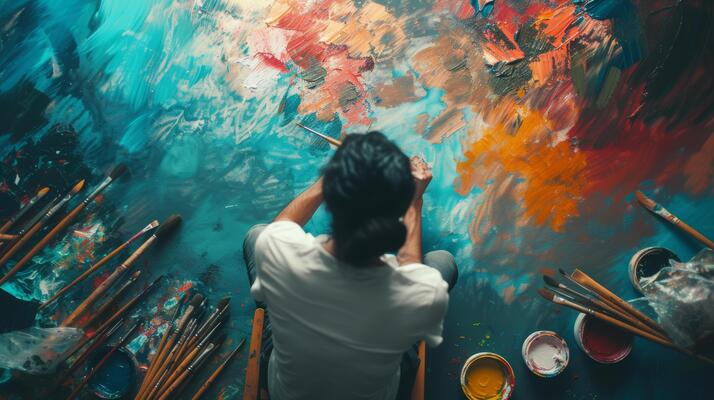Exploring Vintage Photos as Painting References
In the world of art, where creativity meets precision, the utilization of vintage photos as painting references is a technique that has captivated many. Professional photographers often find themselves immersed in this practice, which offers a plethora of opportunities to enhance their work. The vintage photos not only bring an aura of nostalgia but also serve as a bridge connecting different eras of artistic expression.
Vintage photos provide a unique window into the past. Their timeless appeal lies in the stories they tell and the emotions they evokeelements that are invaluable when used as references in painting. For photographers, these aged images offer a distinct palette of tones, grains, and details that modern photography often overlooks. By incorporating such images into their repertoire, visual storytellers can enrich their artistry by blending antiquity with contemporary styles.

Why Use Vintage Photos as References?
The allure of vintage photos in art is undeniable. They carry with them an authenticity that can be challenging to replicate. When used in paintings, they allow artists to capture the essence of a bygone eraan era characterized by unique aesthetics and cultural contexts. But what makes them truly compelling for photographers?
For one, vintage photos have an inherent textural quality that adds depth to any artwork. The grain and imperfections of old photographs can inspire artists to explore unconventional techniques in their painting, pushing the boundaries of their medium. Moreover, these photos often depict subjects and scenes that might not exist today, offering a rare glimpse into past lives and landscapes.
The Process and Techniques
Transforming vintage photos into painting references involves more than just replication. It requires a keen understanding of both photography and painting. Photographers looking to integrate this into their practice must consider aspects such as composition, lighting, and subject matter.
The first step is selecting a photograph that speaks to the artists vision. Once chosen, the challenge lies in translating the photographs features onto canvas. This involves identifying key elements that should be retained and those that can be stylized or exaggerated. Techniques such as layering, color adaptation, and texturing play a crucial role in this transformative process.
Emotional Expression through vintage-inspired art can invoke strong emotional responses, a crucial aspect for photographers aiming to connect with their audience on a deeper level.Preserving the Essence of Vintage
Preserving the essence of vintage photos while translating them into paintings is an art form in itself. The goal is not to merely copy but to interpret and amplify the nostalgia inherent in these images. This involves understanding the historical context and emotional weight carried by the photos.
Through thoughtful interpretation, photographers can create paintings that pay homage to the past while offering fresh perspectives. This delicate balance between old and new can produce artworks that are not only visually striking but also resonant with historical narratives.
Photo-based Art at MoMA showcases the evolution of this technique and its impact on contemporary art practices.Inspiration from Famous Artists
Artists renowned for their use of vintage references serve as a fountain of inspiration for photographers. Exploring their techniques and interpretations can provide valuable insights into the potential avenues one can explore. For instance, the subtle play of light and shadow in these old photos is something that many artists strive to capture and reinterpret in their work.
Famous Artists known for this practice have contributed significantly to the domain, offering a repository of stylistic approaches and thematic explorations.
Challenges in Using Vintage References
While enticing, using vintage photos as painting references is not without its challenges. The primary challenge is the potential loss of detail due to aging and deterioration of the photograph. This necessitates a creative approach to fill in the gaps, calling for artistic interpretation rather than straightforward duplication.
Another major consideration is the ethical aspect. Photographers must ensure they respect the original creators and subjects of vintage photos, maintaining the integrity and authenticity of the stories conveyed.
Photo-Based vs. Digital discusses the differences and dilemmas faced when working across different mediums.FAQ Section
-
Can I use any vintage photo for my painting references?
Not all vintage photos might be suitable. It is essential to choose photos that align with your artistic goals and the story you wish to convey through your artwork. -
How do I preserve the authenticity of a vintage photo?
Preserve the authenticity by maintaining key elements that define the photo's character. Focus on the emotional context and historical significance during the transformation process. -
What are some good examples of paintings inspired by vintage photos?
Numerous renowned artists have delved into this practice. Researching notable artists can provide insight and inspiration for incorporating vintage aesthetics in your work.
By navigating these challenges and embracing the rich narrative potential of vintage photos, professional photographers can craft visually compelling and emotionally resonant artworks that bridge the past with the present.

